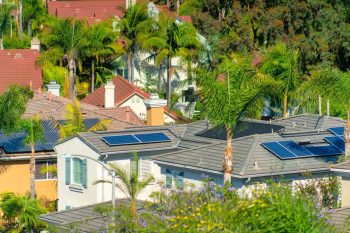Just as firefighters in California got one wildfire under control, an even bigger blaze erupted. The Madre Fire has quickly expanded to become the state's largest so far this year.
What's happening?
The Juniper Fire ignited on the last day of June, about 50 miles east of Los Angeles, California. Three days later, it was 98% contained, per MyNewsLA, having charred over 700 acres in Riverside County.
Although it may be a relatively small fire compared to the larger blazes California has seen in the past year, it has had significant impacts. More than 5,000 people were ordered to evacuate on the fire's first day, according to the New York Times.
As firefighters gained control of the Juniper Fire, a much larger one broke out about 130 miles northwest of Los Angeles.
The Madre Fire began on July 2 and had scorched over 35,000 acres by the following day to become California's largest wildfire so far in 2025. Smoke from the blaze that began in a remote part of San Luis Obispo County quickly spread to two nearby counties, the Times relayed in a separate report.
An air quality watch that was issued for Santa Barbara County advised anyone seeing or smelling smoke to "close all windows and doors that lead outside to prevent bringing additional smoke inside."
Save $10,000 on solar panels without even sharing your phone number Want to go solar but not sure who to trust? EnergySage has your back with free and transparent quotes from fully vetted providers that can help you save as much as $10k on installation. To get started, just answer a few questions about your home — no phone number required. Within a day or two, EnergySage will email you the best local options for your needs, and their expert advisers can help you compare quotes and pick a winner. |
Multiple evacuation orders and warnings were issued as the fire spread rapidly.
Why is this concerning?
This has already been another challenging year for those battling wildfires.
The California Department of Forestry and Fire Protection — known as CAL FIRE — reported that at least eight wildfire incidents had started in the state during just the first three days of July. According to the U.S. Drought Monitor report for early July, over 39% of California was experiencing drought conditions.
There have been nearly 3,300 wildfires in California this year that have burned almost 100,000 acres, killed 30 people, and destroyed over 16,000 structures. Projections suggest that the wildfire season may intensify over the coming months.
|
Do you worry about air pollution in your town? Click your choice to see results and speak your mind. |
"Fire potential across California is expected to increase steadily through summer," stated CAL FIRE's seasonal outlook. "In Southern California, the threat is driven by persistent drought, high grass loads, and weakening coastal moisture."
Numerous studies have shown that the overheating of our planet has led to extended wildfire seasons, increased wildfire occurrences, and expanded the area burned. Heat-trapping gases in our atmosphere are supercharging extreme weather conditions and intensifying the fires.
What's being done to mitigate wildfires?
Advances in technology could help Californians and people vulnerable to fire risks worldwide.
Fiber-cement cladding incorporating recycled material proved to be extremely fire-resistant when it helped save a home from the deadly Palisades Fire that burned 23,707 acres in the Los Angeles area in January.
Researchers are also investigating the potential for artificial intelligence to increase the precision and timeliness of wildfire forecasting, which might improve preparedness measures, warning systems, and response efforts.
Meanwhile, we can all do our part to curb the carbon pollution that traps heat, warms our world, and sets the stage for wildfire risk. Beneficially, many of the steps we can take to help mitigate disasters can lower our utility bills at the same time.
Upgrading to LED bulbs, unplugging "energy vampires," and washing clothes in cold water are three simple changes we can make at home. In our communities — inside California and out — residents, experts, advocates, and officials can collaborate to champion policies that realize social and environmental benefits.
Neighbors can organize support for the transition to cleaner energy systems at the municipal level to make a difference on a grander scale. And policymakers can work to establish standards that protect wildfire insurance coverage for those living in vulnerable zones.
Join our free newsletter for good news and useful tips, and don't miss this cool list of easy ways to help yourself while helping the planet.















